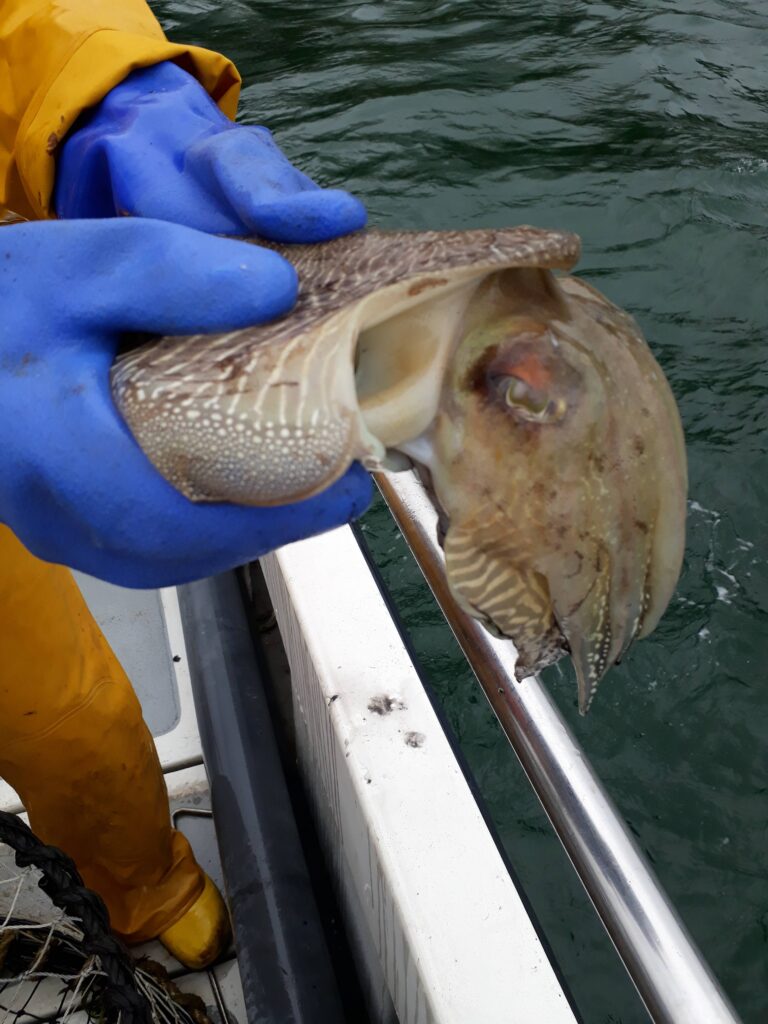Cuttlefish is a common ingredient in Mediterranean and Asian dishes. Its meat is sweet and mild in flavor and works well in stir-fries or slow-cooked braises.
This soft-bodied mollusk is found throughout the world, from tropical seas to cold depths. It has a yearly migratory pattern that ranges from coastal to deep water habitats across its natural range in Europe, Africa, Asia and Australia.
Overview of Cuttlefish as a Food Source
Cuttlefish are marine mollusks that belong to the class Cephalopoda, which also includes squid, octopuses, and chambered nautiluses. They have a unique internal shell, called the cuttlebone.
Their unusual circulatory system has three hearts to pump copper-rich blue to green blood throughout their body. Cuttlefish also have W-shaped pupils and eight arms with two tentacles furnished with denticulated suckers to secure their prey.
They are opportunistic and will eat anything that’s available, including shrimp, crabs, and fish.
Like squid and octopuses, cuttlefish can eject ink to help them escape predators that hunt by sight. This ink can be shaped into a smoke screen or in bubbles that can act as decoys.
Culinary Uses and Traditional Dishes
Cephalopods (squid, octopus, and cuttlefish) have long been used in various cuisines as marine foods. They have traditionally been prepared by boiling and steaming, frying, grilling, marinating, smoking, drying, and fermenting.
Some traditional dishes featuring Cuttlefish include calamar in su tinto, squid “fettucine”, black fideua, rouille, and cuttlefish with peas.
This dish, called seppioline con piselli in Italy, is made with a cuttlefish that is cooked in tomato sauce and peas. Other ingredients may include onions, garlic, basil, olive oil, and white wine.
A classic risotto with squid ink is also a popular food item. It typically includes short-grain rice, dry white wine, olive oil, chopped onion and bay leaf, fish broth, cuttlefish cut into small pieces, and ink from their bags. This is an unusual combination of flavors that is delicious when eaten together.
Availability and Market Trends
The Cuttlefish (Stylophora officinalis) is a common marine organism in the tropical and temperate oceans. It is a migratory species and moves from coastal waters to deeper seas during the winter.
In the summer, they are found in warmer, more sheltered waters of coastal regions. The Cuttlefish is a very smart animal, with specialized eyes that allow it to spot prey.
Cuttlefish have a smooth-curving, W-shaped pupil that allows them to detect the movement of light. They also have two spots of concentrated sensor cells on their retina that change focus. This ability to switch between different modes of vision is similar to human eyes. It has been speculated that the emergence of cuttlefish eyes might be linked to convergent evolution.
Health Benefits and Concerns
Cuttlefish is a good source of several vitamins and minerals that are important for human health. These include zinc, iron, calcium, potassium, copper and selenium.
They also contain healthy omega – fatty acids that are helpful in preventing heart diseases, high blood pressure, reducing triglyceride levels and preventing clots.
In addition, cuttlefish contains vitamin A and B6. These vitamins are associated with a healthier immune system, improved vision and cell growth.
Cuttlefish also provides a good amount of selenium, which may reduce the risk of cardiovascular disease and cancer. It is also a good source of protein, fiber and antioxidants.
Sustainability Issues
The ocean is home to two-thirds of all species on Earth, yet overfishing, pollution, and global climate change are putting marine ecosystems under stress. This puts pressure on seafood sources and on the people who depend on them.
The cuttlefish (Sepia officinalis) is a popular food fish, especially in Asian and Mediterranean markets. However, the global population of this species has been decreasing since the 1960s due to overfishing and global warming.
Ocean acidification and warming are known to have sub-lethal effects on a wide range of organisms, including cephalopods. Here, we investigated the physiology and behavior of cuttlefish hatchlings exposed to these stressors during embryogenesis.

